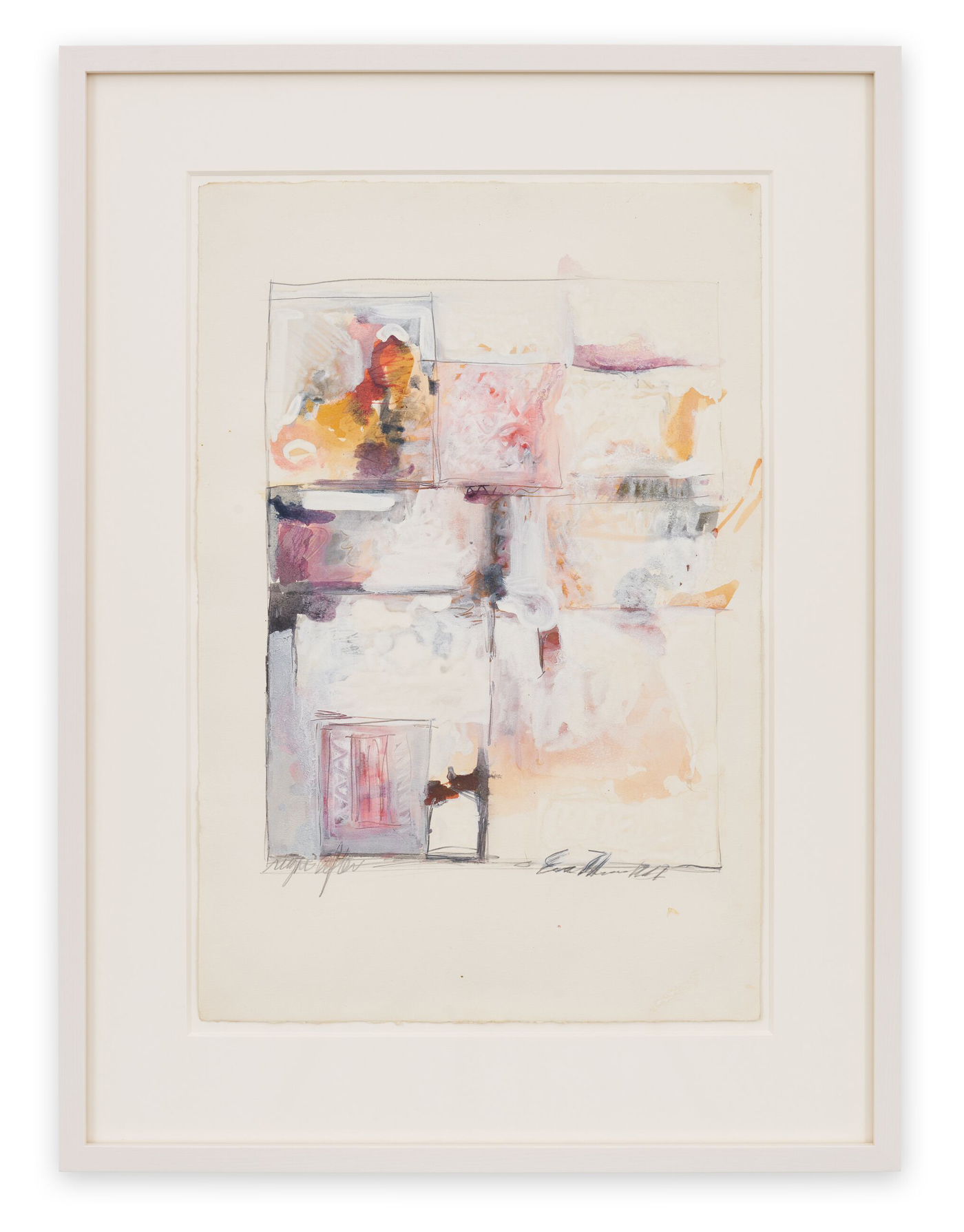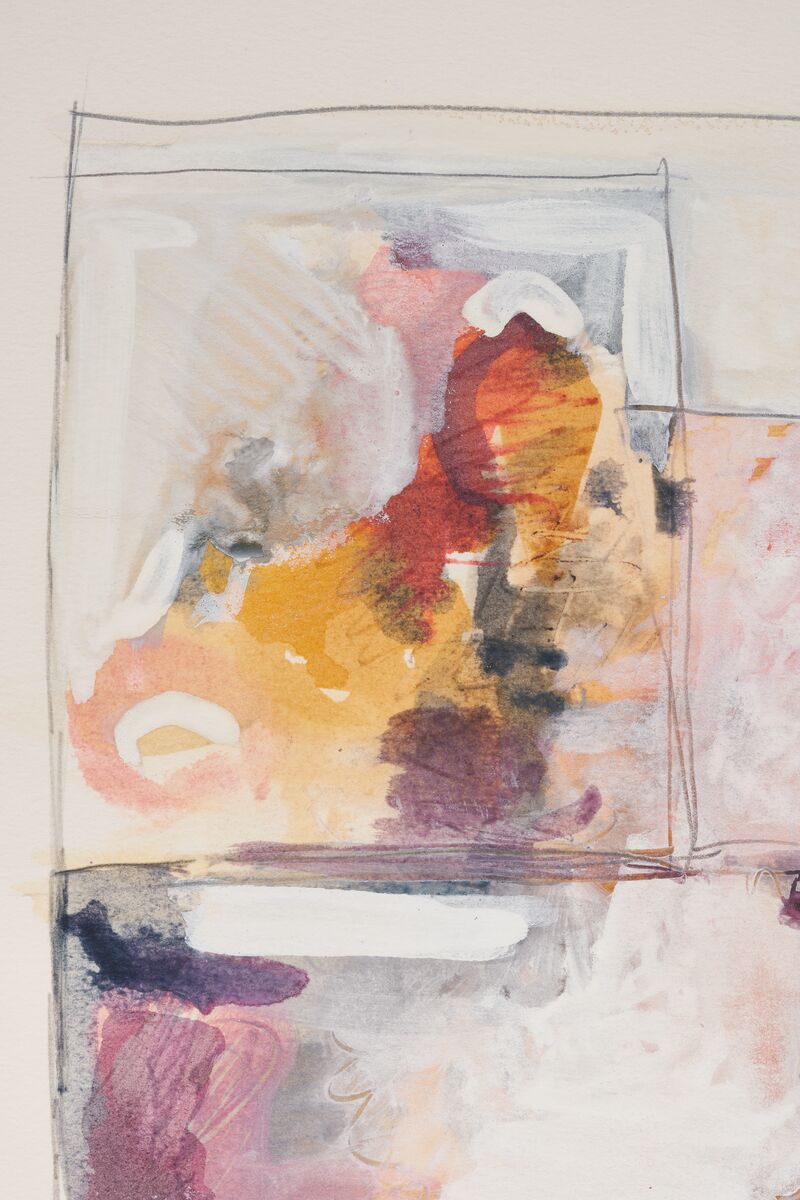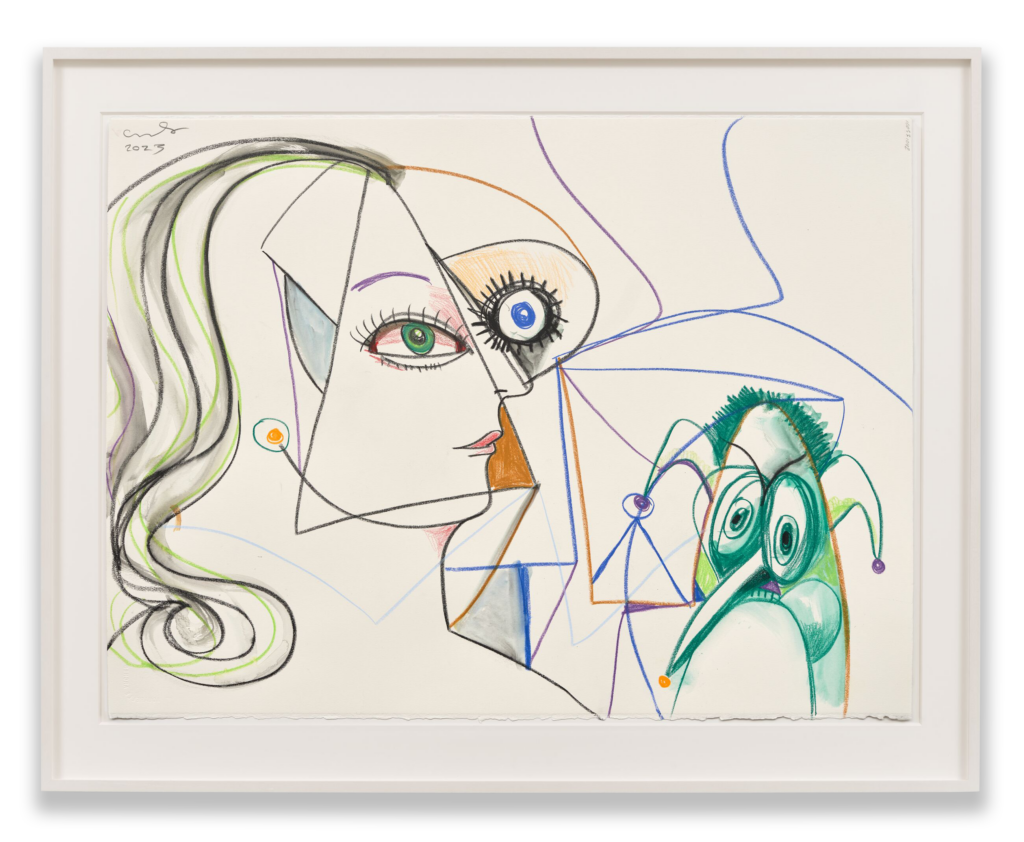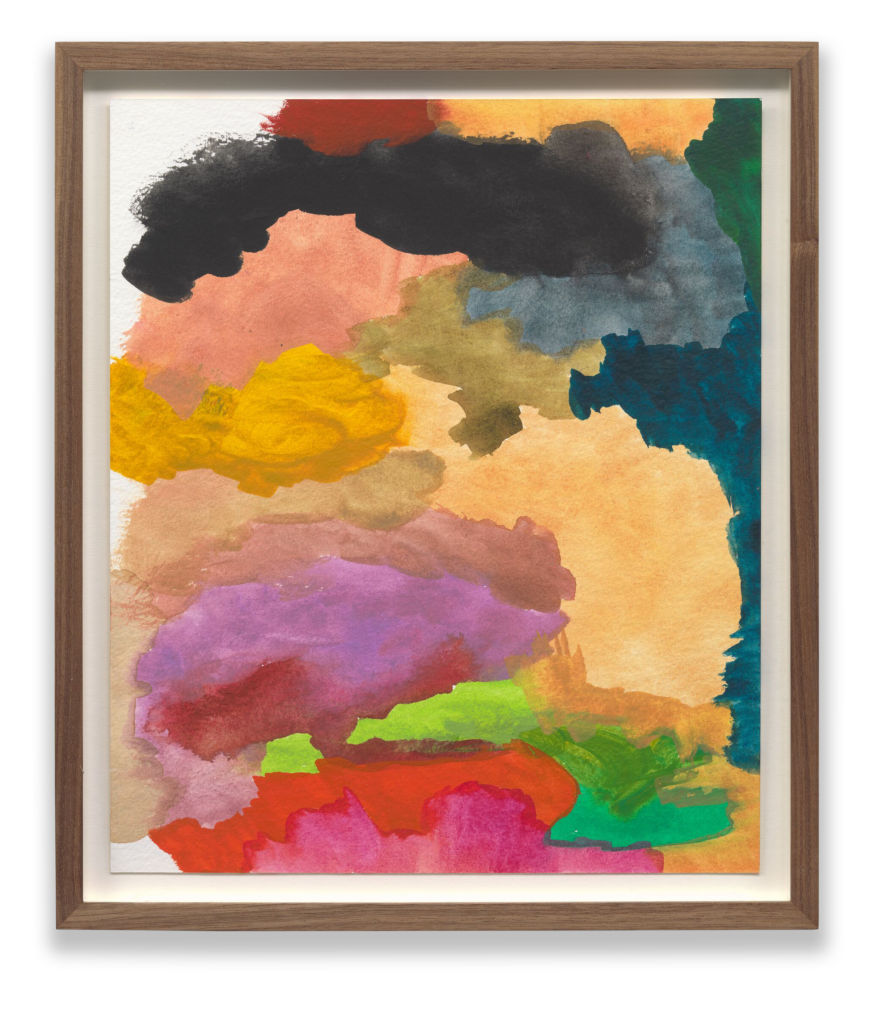Gestural strokes of white, pink and grey gouache highlighted by vibrant oranges punctuate Eva Hesse’s ‘No title’ (1969), a late drawing from her seminal, yet brief, career. In ‘No title’, from Hesse’s ‘window’ drawings—a series she began in 1968—the artist allows process to generate form. Semitransparent colors are layered to reveal their ephemerality within a lopsided grid chaotically dismantled in a refusal to maintain ordered compositional elements. Hesse presents a dynamic state of balance between presence and absence, imbuing the irregular grid with a living presence. Offsetting minimalism with expression, Hesse’s dense gestural marks and the repeated application of subtle layers of translucent color characterize the unique formal language she developed across various media, a technique borrowed from her latex and polyester-resin sculptures. Hesse simultaneously worked in drawing, painting and sculpture—with several drawings relating to her sculptures. The lower left inscription, ‘right after,’ recalls the title of Hesse’s notable sculptural work, ‘Right After’ (1969).


‘… Eva produced powerful art that embraced paradox. She painted and worked with ardor on those paper paintings and achieved paintings and drawings as wisely enduring and deeply eloquent as a Taoist text.’
—Gioia Timpanelli [1]
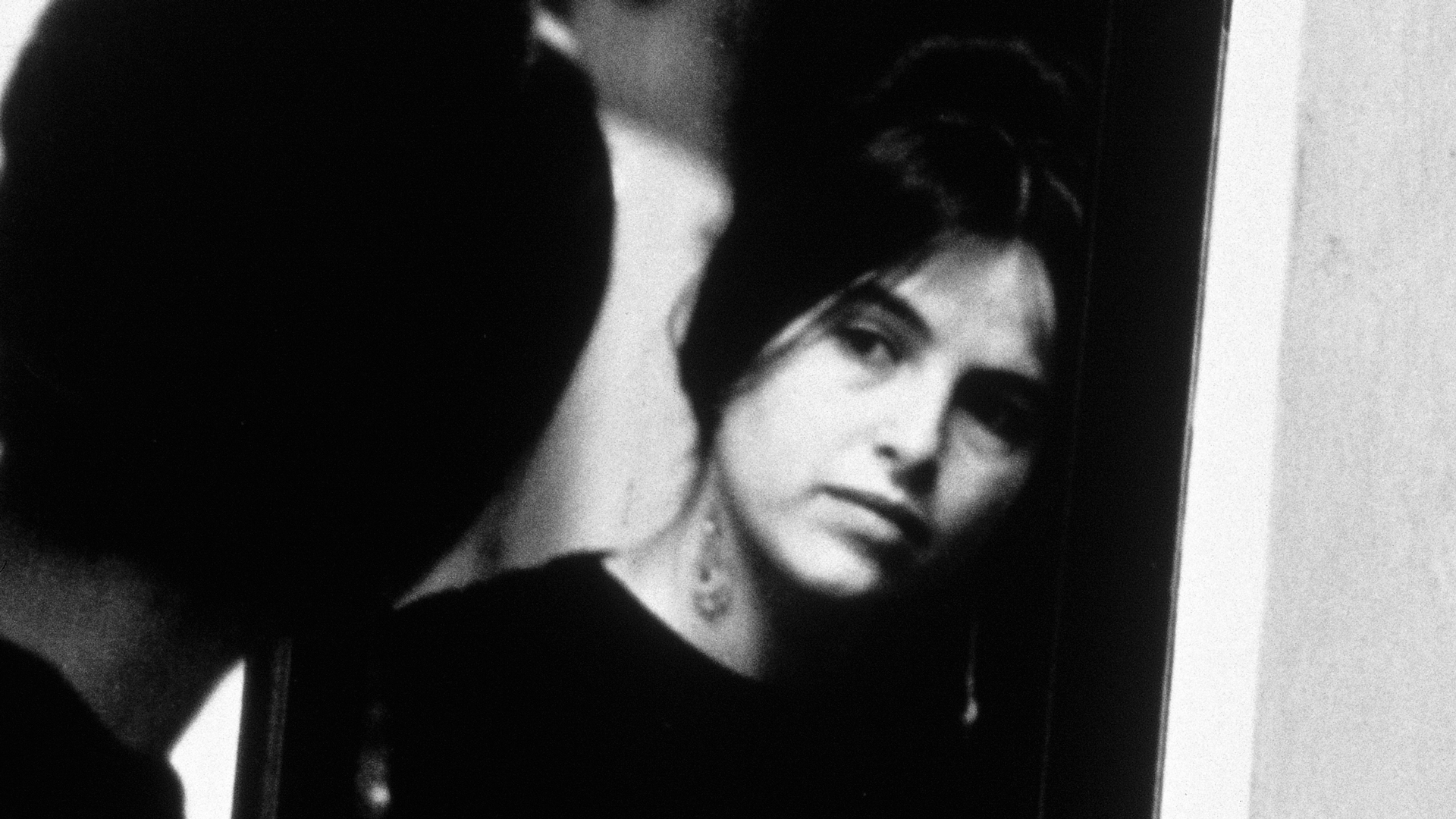
About the artist
Born in 1936, Eva Hesse is one of the icons of American art of the 1960s, her work being a major influence on subsequent generations of artists. Comprehensive solo exhibitions in the past 30 years as well as a retrospective that toured from San Francisco MOMA to the Museum Wiesbaden and finally to the Tate Modern in London, have highlighted the lasting interest that her oeuvre has generated. Hesse cultivated mistakes and surprises, precariousness and enigma, in an effort to make works that could transcend literal associations. The objects she produced, at once humble and enormously charismatic, came to play a central role in the transformation of contemporary art practice.
Artwork images © The Estate of Eva Hesse. Photo: Sarah Muehlbauer
Eva Hesse in her Bowery Studio, 1966. Photo: Unknown
[1] Gioia Timpanelli, ‘Eva Hesse’s Woodstock Paintings,’ Ursula, August 16, 2019, https://www.hauserwirth.com/ursula/25472-eva-hesses-woodstock-paintings/



